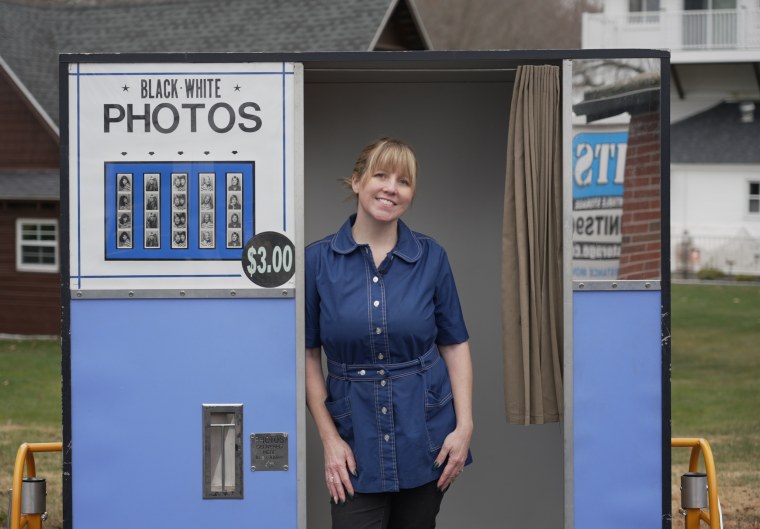In 1925, Anatol Josepho invented the automated photo booth in New York City, originally calling it a photomaton. Nearly a century later, historians say only 200 working analog photo booths are left. One of them has made its way to downtown Manhattan.
After having traveled to Paris and seen street-accessible analog photo booths, Zoë Lazerson, 27, and Brandon Minton, 25, questioned why there are so few booths available in their home city, New York.
“It is the earliest selfie,” Lazerson said.

Determined to share their love of analog, the couple bought a photo booth from an owner in St. Louis. After some research, they committed to a 30-hour round-trip drive to transport it back to the Lower East Side.
The investment proved to be worth it. Their photo booth, dubbed “Old Friend,” has been a success, getting support from a younger generation eager to be captured in the moment by the century-old technology.
“I think there’s something about having a physical photo in your hand,” said Marlon, a customer at the booth on a sunny winter day.
On average, the booth goes through 400 to 700 photo strips a day. Each session costs $8. “We’ve had the line up to an hour and a half,” Lazerson said.

While the analog booth has proven successful as a business venture, keeping it running poses unique challenges. Analog photo booths require regular maintenance, and often the technology required to keep them functioning involves pieces that are no longer manufactured.
Meags Fitzgerald, 37, a photo booth historian, is an active member of a tightly knit 50-person community of booth technicians, owners, collectors and enthusiasts.
“It’s a 70-year-old technology in most cases, in some cases older, and the parts are brittle and can break,” she said.
When digital technology came about, Fitzgerald said, many companies no longer saw the use in putting up with the hassle of keeping analog booths alive, ultimately replacing analog chemistry tanks with instant digital printouts.
“In the early digital era, kind of very late ’90s or early 2000s, these major photo booth companies were jumping at the gun to switch out these analog machines and replace them with digital ones,” she said.
Some booths were effectively zombified, maintaining their retro look on the exterior but with replaced digital parts inside. Others were trashed entirely and ended up in landfills. “With that, a lot of knowledge of how to service the photo booths died,” Fitzgerald said.
Bre Conley, 41, understands the complicated nature of photo booths well. Conley, a former wedding photographer, owns about 50 photo booths, 20 of which operate across seven states while she works to restore and place the rest.

“My whole goal was really to get as many booths as I could and put them in places where anybody could use them,” she said. Conley and other enthusiasts have compiled a list of every operating analog photo booth in existence — a tally of about 200.
Much like Lazerson and Minton, Conley has run into challenges. Her most unexpected one: finding the right paper.
The specific type of paper required for analog photo booths is made in Russia. And when the Russia-Ukraine war began, booth owners weren’t sure how they’d continue to operate.
“No shipments from Russia were allowed into the U.S., and so we were cut off from the supply, and a lot of photo booth technicians went under,” Conley said.
She wasn’t willing to let the booths go down without a fight. Conley wrote to film labs and scoured the globe for someone willing to make the right paper. After having tested various types, she found a brand that would work but required hand cutting. With a surge in demand for booths and paper, the company now provides precut rolls of its paper.
“It’s definitely an endless battle,” she said.
But the fight to maintain the old machines is worth it, analog photo booth enthusiasts and owners agree, if only for the unique physical keepsake.
“Photo booths capture time and a memory that they can cherish and keep forever,” Conley said.
Said Lazerson, “You have a private moment with yourself where you go in with friends or family, and it’s that connectedness that I think people are seeking.”